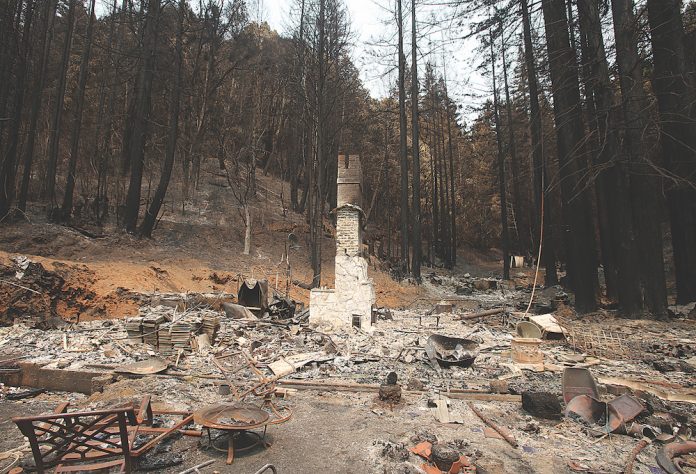SANTA CRUZ COUNTY—Santa Cruz County’s top fire official on Tuesday warned that, because of a lackluster rainy season, the ongoing drought and low reservoirs, the upcoming fire season could be as bad or worse than last year’s.
“As we look back at last year, anything is possible at this point,” said Cal Fire San Mateo-Santa Cruz Unit (CZU) Chief Ian Larkin. “I don’t think any of us ever thought we would have seen a fire burn with the intensity and speed as at which last year’s fire burned.”
Last year’s CZU Lightning Complex Fire was the 12th-most destructive in California history, Larkin said.
“And we’re not looking any better than we were last year, unfortunately,” he said.
In a state-of-the-county report to the County Board of Supervisors, Larkin said the situation is worsened by record-low snowfall in the Sierra Mountains, which in April was at 57% of normal and is nearly all melted away. In addition, the Central Coast saw around 50-70% of its annual rainfall.
Larkin pointed to more than 100 fires that occurred in January, sparked by high winds. Thanks to low rain levels, dry grass and other growth could present an additional challenge.
“It’s very concerning to us to have so much fuel available this early in the season,” he said.
Crews have worked this year to reduce this fuel load, including 250 burn piles and chipping downed trees.
Larkin also says that Cal Fire has recently gotten four Blackhawk helicopters, which are capable of faster speeds, and can carry more water and personnel than the Huey helicopters. The agency also plans to purchase a C-130 plane capable of holding up to 4,000 gallons of fire retardant.
Last year, the U.S. Drought Monitor listed Santa Cruz County as being in an “abnormally dry drought” last year. That has since worsened to a “severe drought” category.
“This is going to have a significant impact across the western United States as we move into fire season and we talk about resource allocation between states and also within the state of California,” Larkin said.
Larkin says that the county has already moved into summer staffing numbers as it prepares for the possibility of a large fire season.
That has been a challenge during the Covid-19 pandemic, he said.
Of the 57 crews of jail inmates trained to fight fires, four are in quarantine, he said. In addition, there are only two crews stationed at Ben Lomond Conservation Camp, when normally five are standing by.
“We have a significant reduction in a resource that provides a vital role in our suppression efforts and containment efforts statewide,” Larkin said. “That could have an impact as we go forward.”








